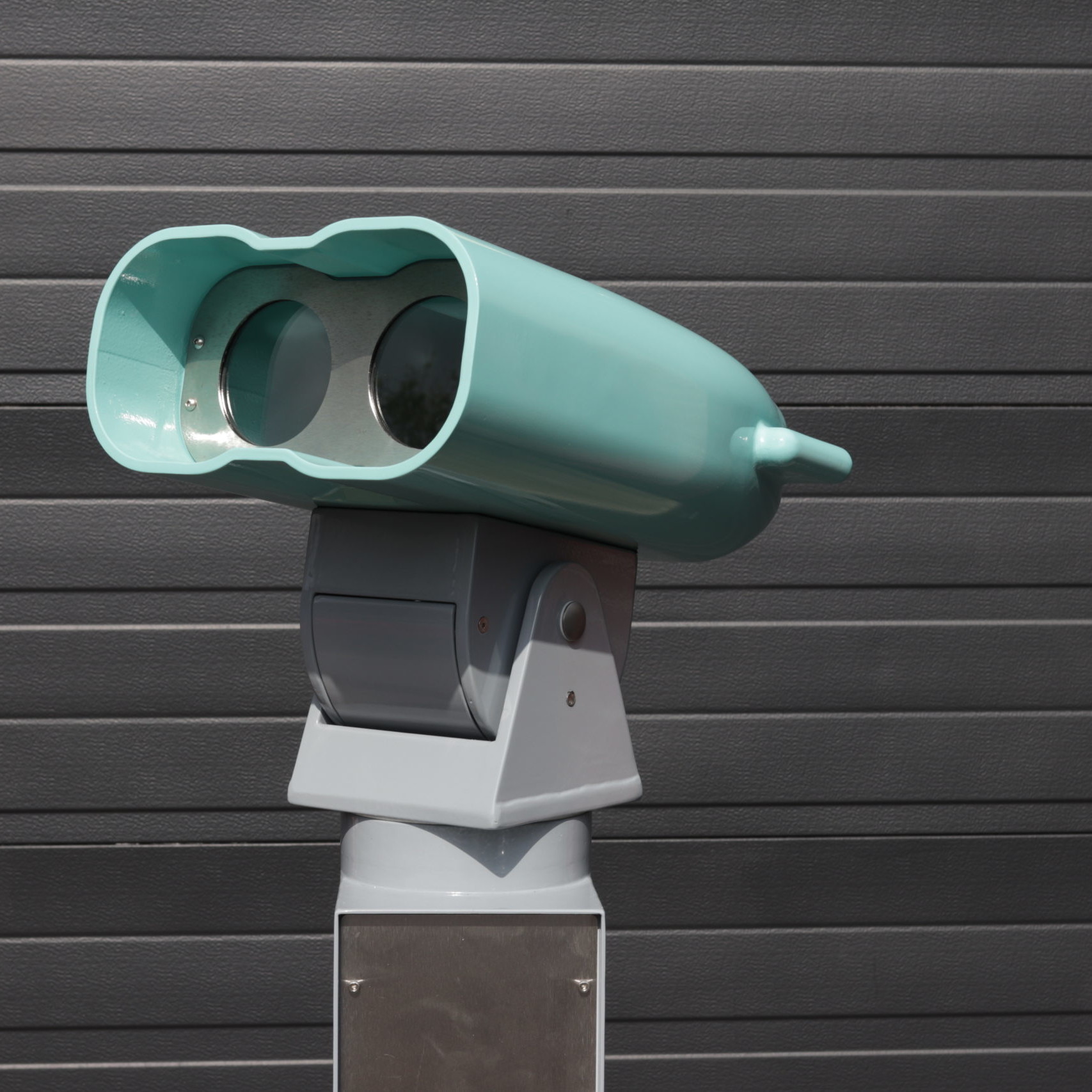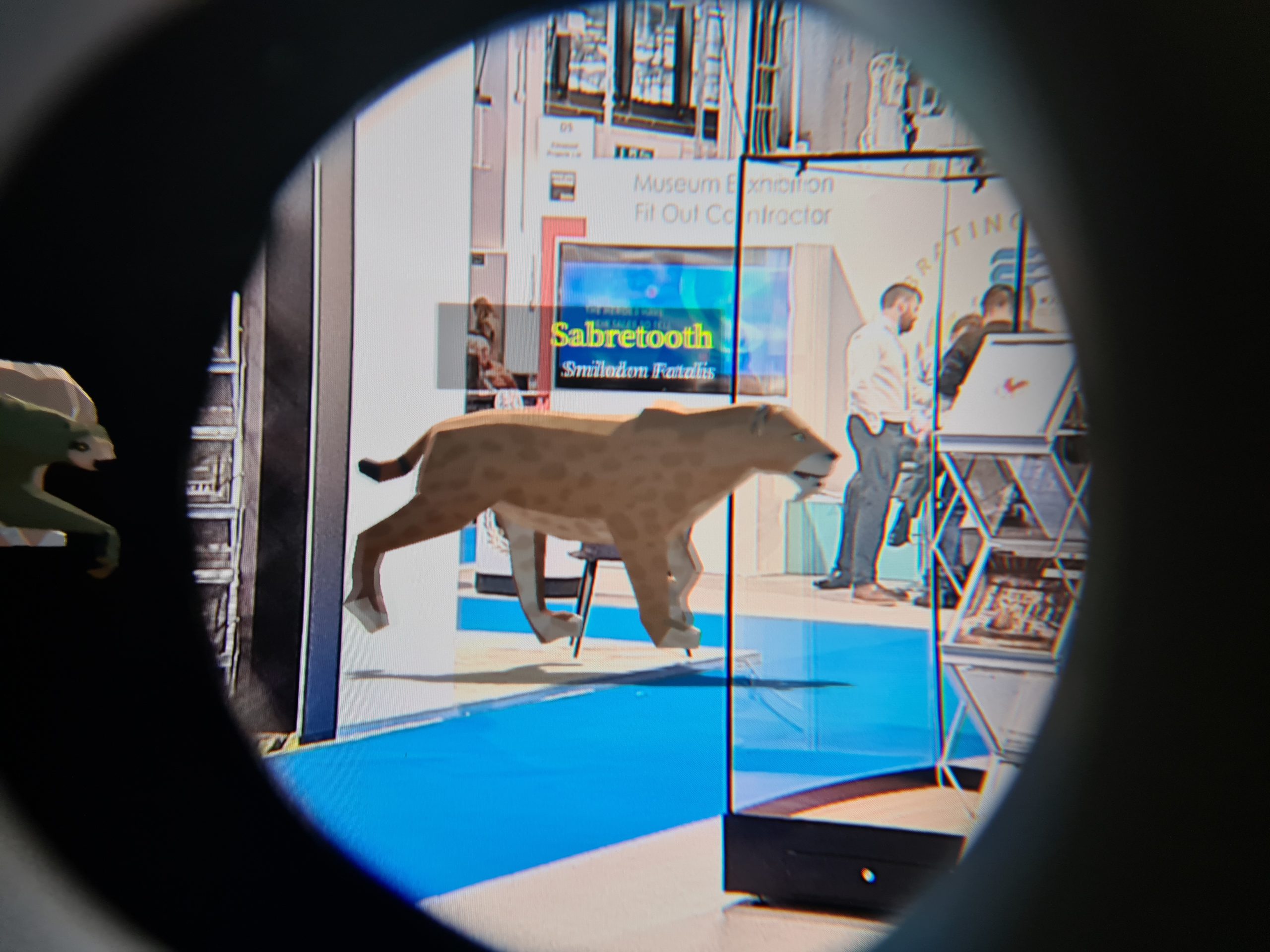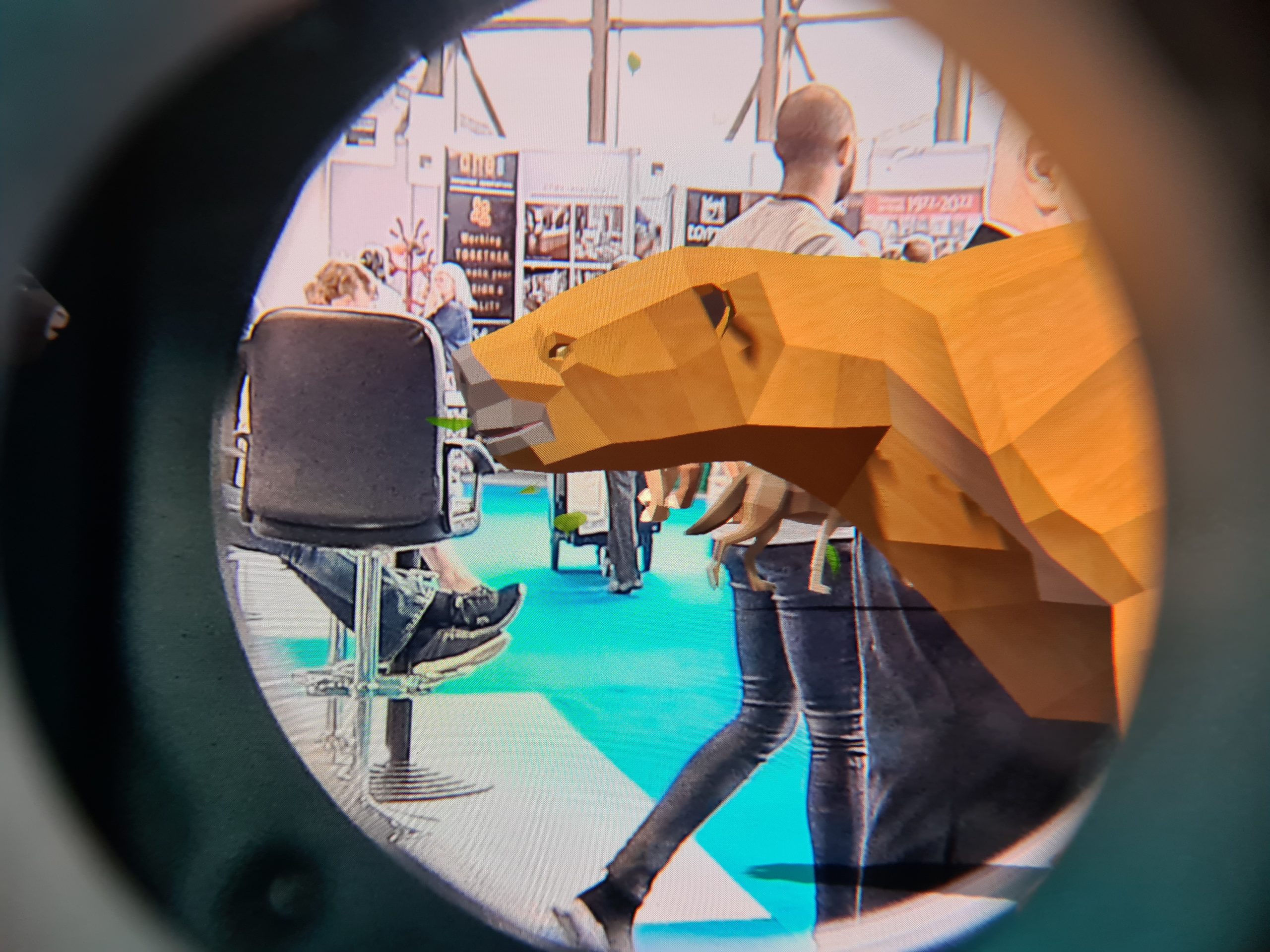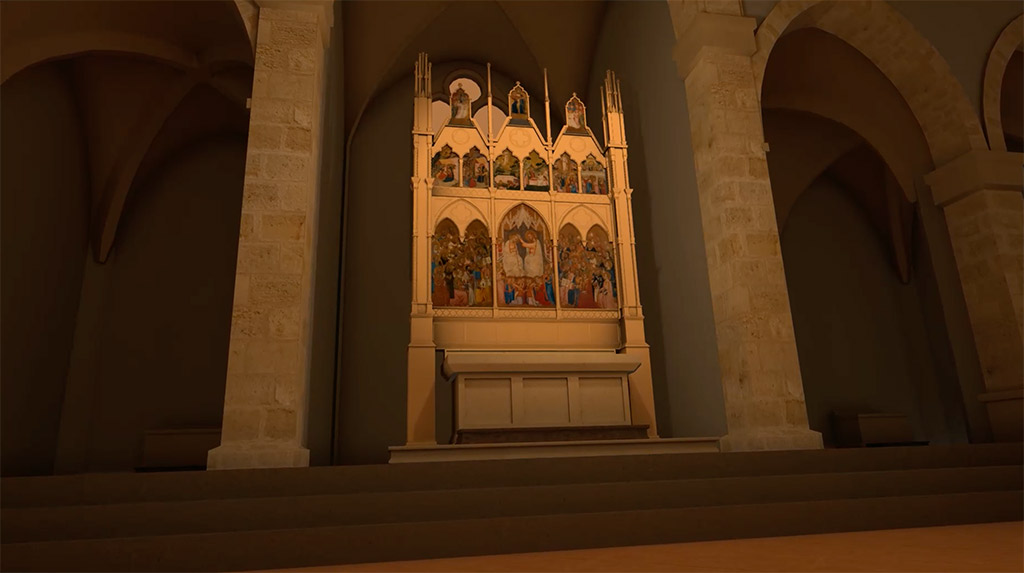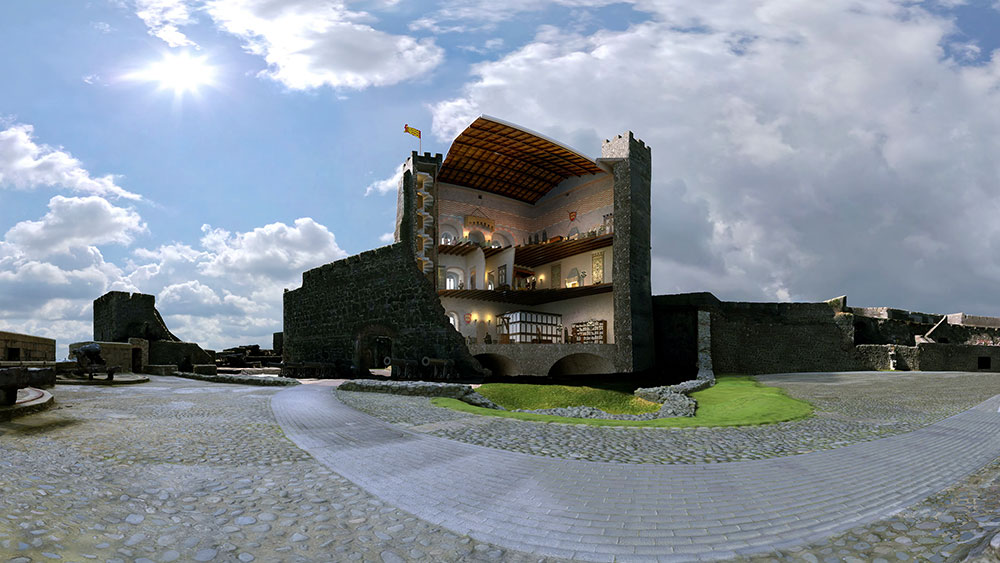Sharing our latest AR/VR binoculars with the Heritage and Culture sector
We’ve been developing our AR/VR binoculars for over five years but our latest model only came together in the last few months.
The 30th Museum + Heritage show was the perfect opportunity to launch our innovative solution to the BYOD and digital poverty issues faced by many museums looking to create immersive historic experiences for their visitors. Read on to hear what we discussed and how AR binoculars could be just what you’re looking for…

Why AR binoculars?
Museums and galleries have been exploring the possibilities of AR and VR for years now. Our past projects at National Gallery and Carrickfergus Castle reveal the power of augmented reality apps to show visitors impossible historic views like lost architecture or to transport them back in time to see their current location reimagined as it was centuries ago.
Whilst we love creating out of this world AR and VR experiences, we’re also aware of the limitations.
Asking museum visitors to download an app requires them committing battery power and mobile data, as well as waiting for the experience to load before diving into the experience. Studies conducted during the pandemic shed light on the digital poverty affecting almost 10% of UK families, meaning expecting visitors to have a smartphone with enough data to download an app risks alienating lower income families.
Meanwhile VR remains a mystery to the majority, with many discouraged from donning a VR headset in public because they don’t want to look silly or mess up their hair. The rise of the Metaverse has also sparked further debate on the safety of VR for children.
Our binoculars are a powerful tool for sharing past or future views and for education and visualisation, without the above limitations.

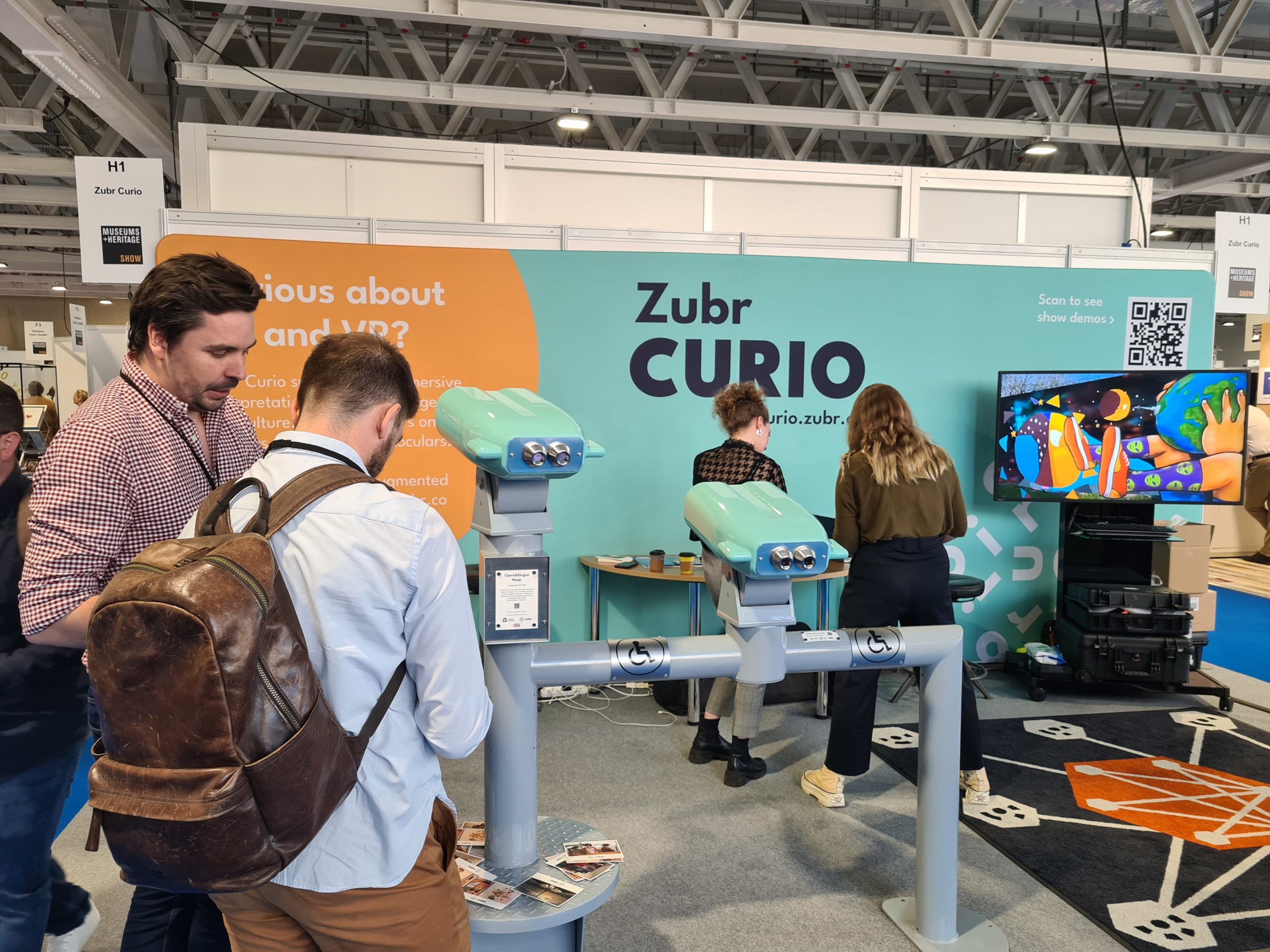
What did we show?
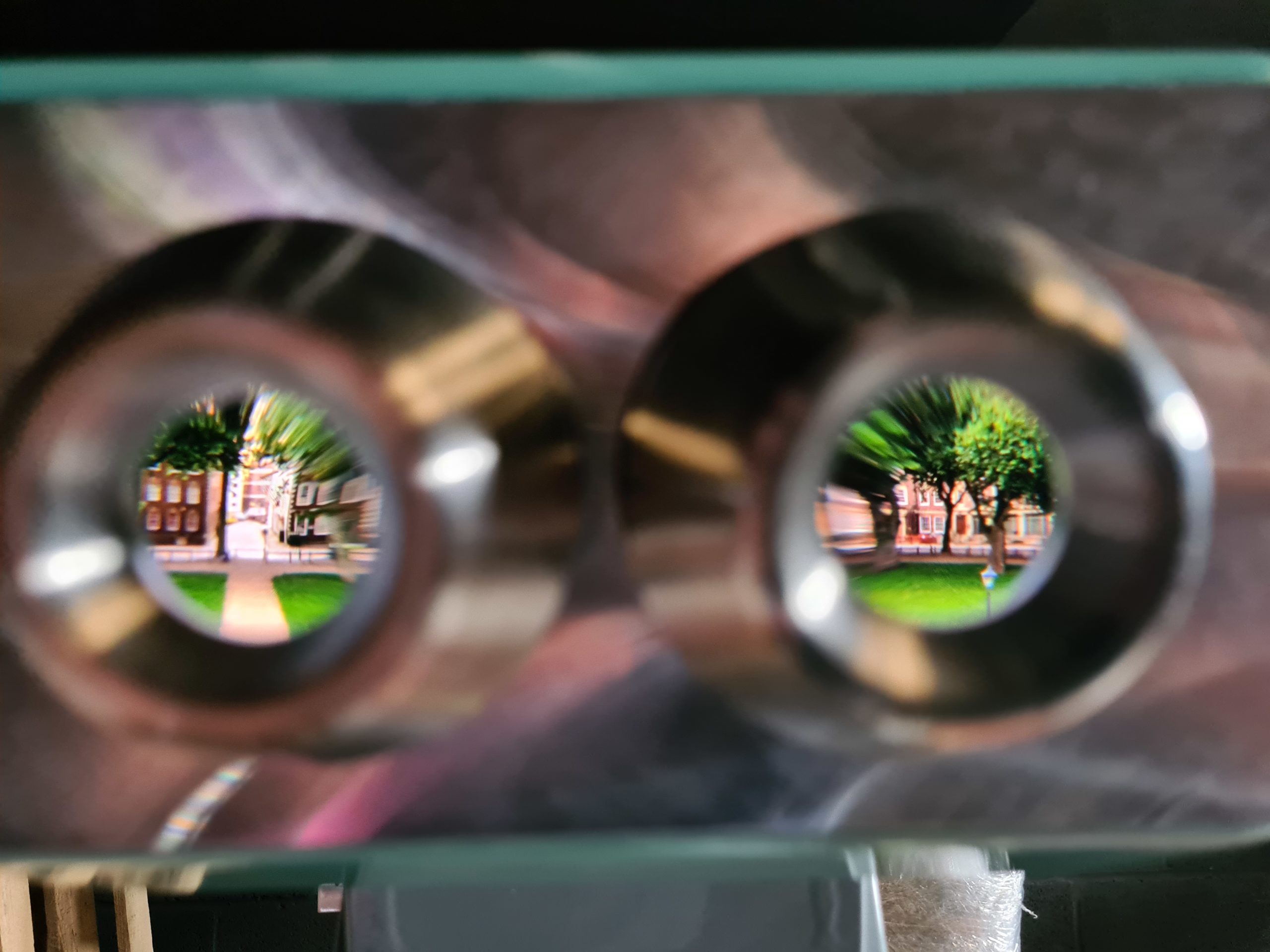
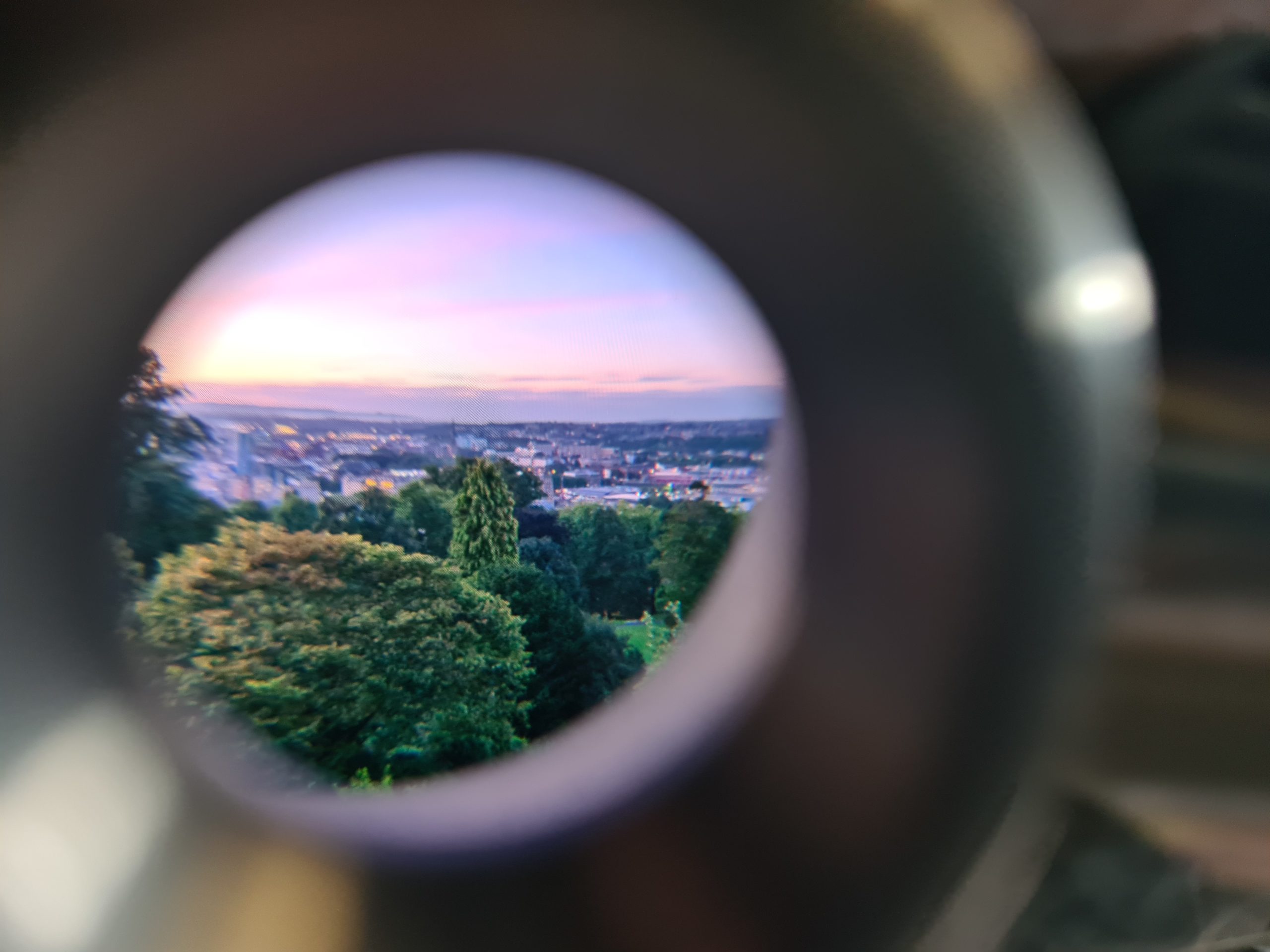
With a large stand and four of our binocular units on display we had plenty of space to show off some cool content.
To showcase how easy it is to reuse existing 3D assets to create jaw-dropping views through the AR binoculars we took scenes from our Hidden Florence and Carrickfergus Castle projects and let visitors gaze at each location. Just by peering through the lenses they were whisked away to 14th century Florence, or could dissolve the wall of the keep to expose the daily goings-on inside. These experiences were more ‘light VR’ than AR, as you became totally immersed in another world.
We chose to exhibit augmented reality on another binocular let visitors see prehistoric animals roaming around the show room. Mammoths, saber tooth tigers and gazelles grazed, ran and fought amongst the unsuspecting heritage professionals and were only revealed through the power of the binoculars! Information about each species popped up when users focussed on the animal, proving how simply context, data or statistics can be conveyed through the binoculars as well as stunning visuals.
Our final unit showed off some of our long time collaborator Misha‘s beautiful 360 photography. Looking through the binoculars treated you to otherworldly captures of real places from around the world. Visitors could spin the binoculars to really take in the view from all angles.
What did we discuss?
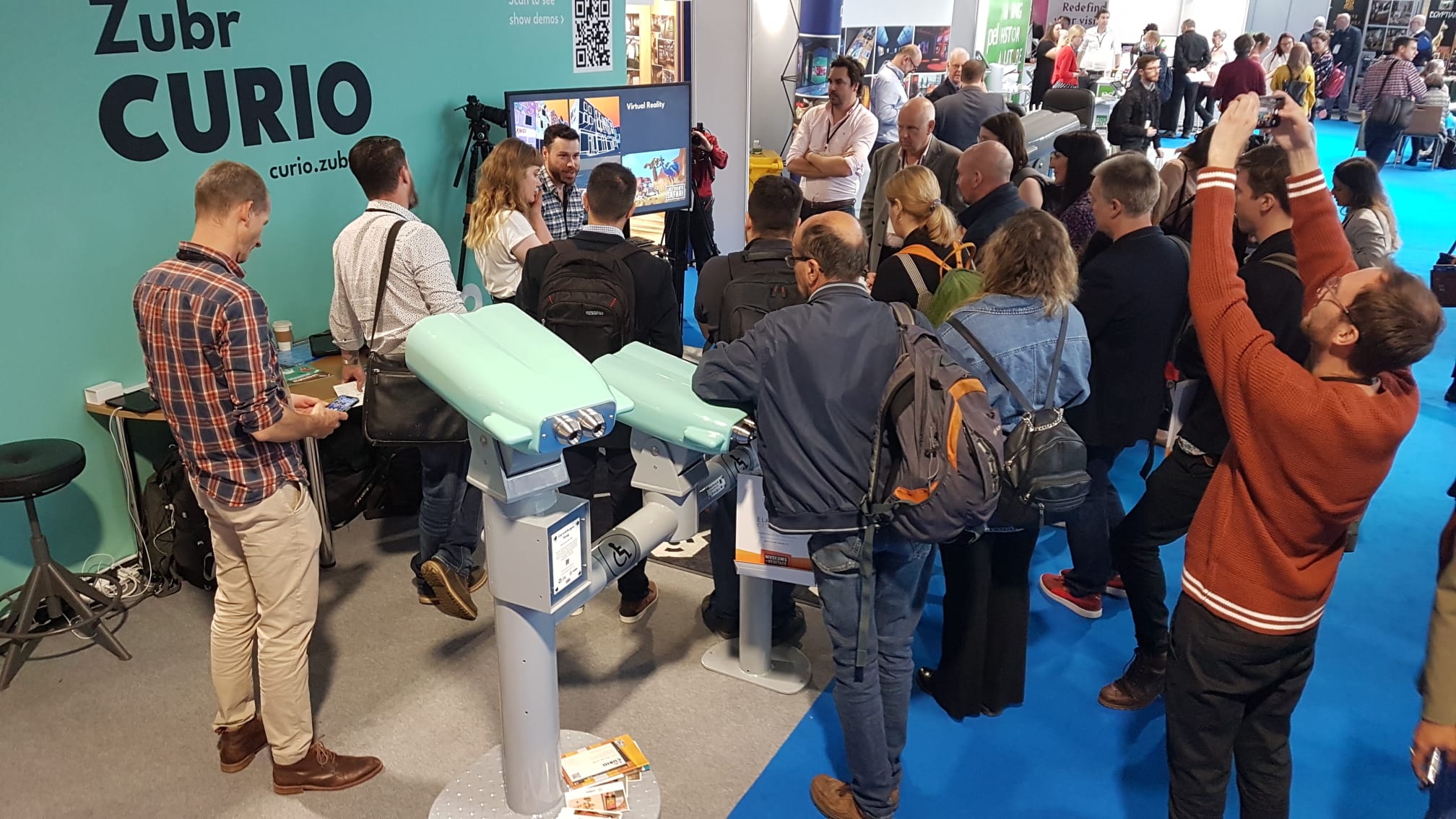

As always, if any of this has peaked your interest or sparked some questions, don’t hesitate to contact us.
We understand that every organisation and project has different needs and priorities, and are happy to advise on anything from fundraising applications and budgeting to installation and software.
Just let us know how we can help you get the most from AR or VR for you and your visitors.
As well as breaking down the process of developing our AR binoculars during our masterclass, we spoke to hundreds of people over the two day event. From sports grounds to national museums – everyone had their own ideas about how augmented or virtual reality binoculars could benefit their visitors.
Because they look so analogue, our binoculars very user-friendly, require almost no instructions, and are suitable for all ages and technical levels. They are solid, robust, weather-resistant installation suitable for museums, parks, historic sites, zoos, and don’t require constant updating or a member of staff to supervise them all the time.
People in the sector immediately grasped the potential of bringing immersive tech to visitors via the old-school hardware – sparking ideas that would never be possible with conventional VR headsets.Visitors were intrigued by the possibility of loaning the binoculars temporarily or installing them for a longer period and updating the software content seasonally or in line with their changing programmes.
Possible projects ranged from giving visitors a surprising view through a window, to bringing taxidermy to life in a gallery. We were wowed by the creativity and passion visitors showed for sharing stories with their museum-goers, and can’t wait to get collaborating to make their visions a reality.
